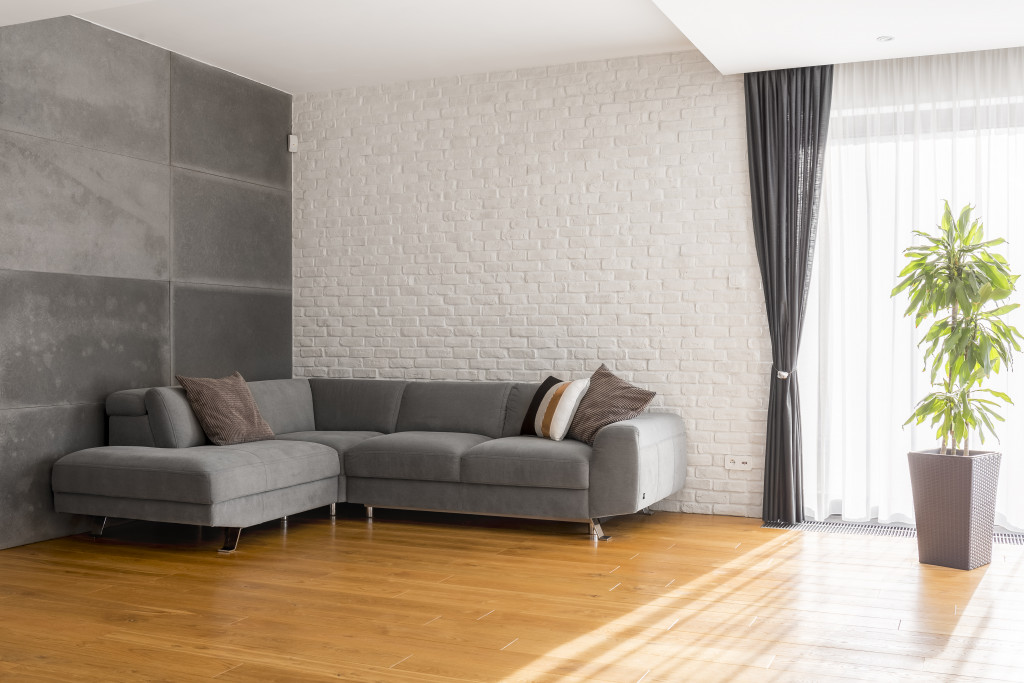- Blend classic and modern furniture for a unique, sophisticated interior design aesthetic.
- Windows play a crucial role in merging classic and modern home design elements.
- Elevate your home’s aesthetic with window placement and effective treatment.
- The ceiling, often overlooked, can significantly contribute to the fusion of classic and modern styles.
- Experiment with ceiling paint and textures to bridge the gap between old and new aesthetics.
As architectural styles evolve, interior design has significantly shifted towards modernization, often disregarding classic elements that once defined traditional homes. Fortunately, achieving a harmonious blend of classic and modern design is not impossible.
This juxtaposition creates a unique and appealing aesthetic that bridges the past and future. Thoughtfully integrating contemporary design principles with timeless elements makes crafting interiors that exude charm and sophistication possible.
Marrying these two styles can elevate one’s home to a new level of sophistication. This blog post delves into how one can achieve this balance and transform their living spaces into timeless settings.
The Fusion of Furniture Styles
In your quest to design a home that embodies timeless elegance, your choice of furniture plays a pivotal role. Here’s how you can blend classic and contemporary furniture pieces to achieve this aesthetic:
Embrace the Power of Contrast
While it may seem counterintuitive, placing pieces of classic and modern furniture side by side can create a stunning visual impact. A sleek, minimalist couch can unexpectedly complement a baroque-style coffee table, drawing attention to each piece’s unique beauty. This contrast allows both styles to shine without overpowering each other.
Mix the Old with the New
Finding balance is critical when blending classic and modern elements in your space. Avoid creating a time capsule or a futuristic showroom. Mix antique pieces like ornate mirrors or vintage rugs with contemporary items like glass coffee tables or mid-century lighting fixtures. This creates a captivating, multi-layered interior that intrigues and captivates.
Play with Color and Texture
Experimenting with color and texture is another effective way to blend classic and modern styles harmoniously. Neutral color palettes can unify the space, with bold accents adding pops of modernity and vibrancy. Regarding texture, consider combining plush antique fabrics with sleek modern surfaces to add depth and sophistication to your interiors.
Windows: Bridging the Gap
When bridging the gap between classic and modern design elements, your windows play a crucial role. Here’s how you can leverage the design and treatment of your windows to tie together your home’s varying stylistic influences seamlessly:
Light as an Architectural Element
Windows are more than just light sources; they bridge classic and modern home design. Traditional homes flaunt wooden shutters and stained glass, exuding history and warmth. Modern homes embrace floor-to-ceiling windows, inviting natural light. Merge both styles for a bright and inviting space, blending the old and new beautifully.
The Power of Window Treatments
Window treatments can transform a room’s aesthetic. Classic styles feature heavy drapes or ornate valances, adding grandeur and luxury. Modern design favors minimalist blinds or sheer curtains, emphasizing clean lines and simplicity. By creatively combining these elements, you can create stunning visual contrast, adding depth and interest to your space.
Emphasize Views with Strategic Window Placement
Window placement can be crucial in merging classic and modern design elements. Traditional homes often use sash windows to frame picturesque views, while modern homes use them to create a seamless indoor-outdoor connection.
In a classic home, sash windows, with their detailed craftsmanship and elegant proportions, contribute to the timeless aesthetic, embodying the charm and character of yesteryears.
If you want to incorporate classic elements for sash windows into your modern home, consider seeking guidance from sash window specialists to ensure seamless integration and a visually harmonious outcome. By combining these strategies, you can achieve a balanced design that enhances your home’s aesthetic while showcasing the beauty of your surroundings.

Elevating the Ceiling Aesthetic
The ceiling is a key aspect often overlooked in home design. However, when consciously incorporated into the design process, it can significantly contribute to the fusion of classic and modern styles. Below, explore several ways to elevate the ceiling aesthetic in your home:
The Renaissance of Coffered Ceilings
Coffered ceilings, a classic design element, breathe luxury and depth into a room. Traditionally used in formal settings, these ceilings can be updated with modern colors or finishes to align with contemporary aesthetics, creating a balanced and timeless appeal.
Combining Classic Chandeliers with Modern Lighting Fixtures
Light fixtures play a crucial role in defining a room’s ambiance. A stunning way to marry classic and modern styles is by pairing a traditional chandelier with contemporary recessed lighting. This combination provides ample light and adds a distinctive, layered look to the room.
Playing with Paint and Textures
Experimenting with ceiling paint and textures bridges the gap between old and new. A matte white ceiling contrasts with bold walls for a modern edge—a textured ceiling pairs with minimalist furniture for a striking balance.
Incorporating Modern Architectural Elements
Modern architectural elements like skylights or exposed beams can transform a room’s aesthetic. Paired with classic decor, they create harmony between the old and the new. The result is a comfortable and cutting-edge space.

In conclusion, achieving timeless elegance in home design balances the old and the new. It’s not about choosing one style over another but learning to blend classic and modern elements harmoniously.
By thoughtfully incorporating different furniture styles, playing with color and texture, creatively using windows, and paying attention to ceiling aesthetics, you can craft a space that pays homage to history and embraces the future.
Ultimately, the goal is to create an aesthetically pleasing, comfortable, and inviting living space, exuding a charm that stands the test of time.

